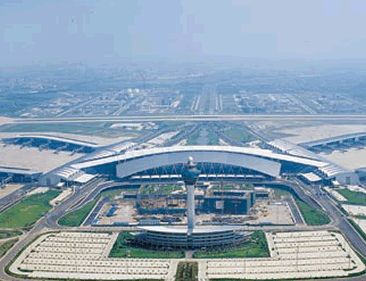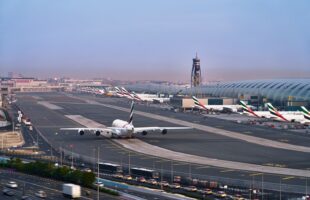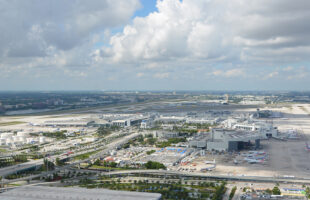
The latest figures from the Airports Council International (ACI) show a marginal growth in total air freight traffic worldwide, up 1.1 per cent in March 2016 as compared to the previous year, but largely sustained by domestic growth. International freight traffic dropped by 2.1 per cent whereas domestic freight traffic increased by a full 9.0 per cent.
Accumulated freight traffic for the first quarter of 2016 shows no increase in volumes as compared to the previous year. International freight oscillated between -1.0 and +1.0 per cent over the course of the year and dipped into negative territory three times within the last six months on a year-on-year basis. Significant air freight declines were observed in Asia-Pacific and North America in February and March.
Passenger air traffic, even taking into account the moderate slowdown after two months of high growth, is significantly stronger as compared to air freight, where industry-wide capacity growth is in collision with falling demand. Global trade growth remains subdued, while international tourism is on the rise, ACI noted.
Asia Pacific
On the individual airport level, the air freight landscape in Asia-Pacific is mixed. While some freight hubs recorded robust growth – Shanghai-Pudong (PVG, +5.7 per cent), Singapore (SIN, +5.2 per cent), Beijing (PEK, +6.0 per cent), Guangzhou (CAN, +14.3 per cent) and Delhi (DEL, +17.5 per cent), several airports experienced air freight declines, including Seoul (ICN, -4.0 per cent), Tokyo-Narita (NRT, -10.3 per cent), Taipei (TPE, -3.5 per cent) and Bangkok (BKK, -1.4 per cent).
North America
In North America, the picture is mixed as well; with the major cargo hubs of Memphis (MEM) and Louisville (SDF) grew strong by 12 per cent and 11.4 per cent respectively, other big freight airports posted declines. Anchorage (ANC, -3.8 per cent), Los Angeles (LAX, -3.9 per cent), Miami (MIA, -1.3 per cent), Chicago-O’Hare (ORD, -13.5 per cent) and New York (JFK, -6.7 per cent).
This slowdown in air freight in both Asia-Pacific and North America is symptomatic with respect to increased transpacific air freight traffic a year ago, resulting from the disruptions of US west coast sea ports, ACI noted. This distortion plays a role in the decline at some of the key airports in the first quarter of 2016.
Europe
In Europe, out of four major air freight hubs, two airports reported traffic declines—Frankfurt (FRA, -2.0 per cent) and London-Heathrow (LHR, -3.8 per cent), whereas the other two—Paris (CDG) and Amsterdam (AMS)—showed growth of 3.6 and 0.5 per cent respectively, reflected in 0.3 per cent growth rate for the region as a whole. While air freight in Istanbul (IST) declined by 14.2 per cent year-on-year, Brussels (BRU), affected by the terrorist attacks of 22 March, contracted by 22.4 per cent.
Latin America-Caribbean
Latin America-Caribbean is the only region plunging into negative territory with respect to air freight volumes during the month of March (-3.8 per cent). While air freight declines are apparent to airports in Brazil (e.g. Sao Paulo, GRU, -11.3 per cent), other major air freight hubs recorded substantial declines in air freight as well, including Bogota (BOG, -5.1 per cent), Lima (LIM, -13.4 per cent) and San Juan (SJU, -5.1 per cent).
Middle East
The Middle East, which was outperforming all other regions with respect to air freight growth over the last year, shows moderation in air freight traffic development, according to ACI. The two Dubai airports were flat at 0.1 and -0.8 per cent for DXB and DWC respectively. The slowdown was even more pronounced at Abu Dhabi (AUH, -5.9 per cent), yielding the palme d’or of growth to Doha (DOH, +18.7 per cent). The region as a whole however, still outperforms all other parts of the world in terms of air freight growth on both year-to-date and year-end bases (+4.4 and +8.1 per cent respectively).
Africa
In Africa, the air freight picture is mixed as well: While Casablanca (CMN) and Dakar (DKR) grew by 3.8 and 19.4 per cent respectively, Johannesburg (JNB) remained flat at 0.6 per cent, and Nairobi (NBO) reported air freight declines of 6.4 per cent.








